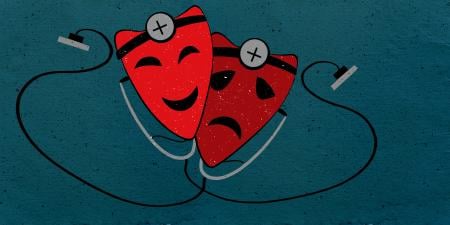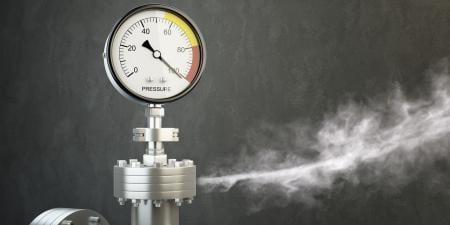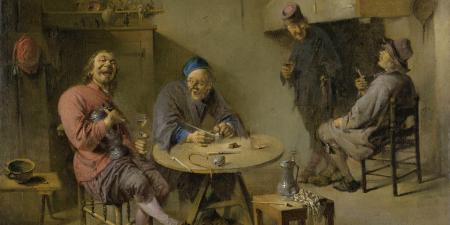Abstract
Although humor in health care can facilitate relationship building between patients and clinicians, callous humor used to deflect or dismiss distressing emotions undermines relationships, erodes trust, and expresses disregard for vulnerability. Because it affects collegiality, training, and patient care, callous humor should not be tolerated, especially when directed at patients. This article considers why it is important to respond to colleagues who make callous jokes and suggests how to do so.
Functions of Humor in Health Care
It’s likely that humor is as old as healing. Hippocrates, for instance, advised his patients to “contemplate on comic things” to facilitate recovery.1 Today, one would be hard-pressed to find many physicians prescribing laughter and humor for patients, although clinicians frequently use humor. Indeed, humor in clinical settings can be welcomed by patients, and understandably so: humor and joking can put some patients at ease, level power imbalances, facilitate relationship building, and help patients articulate things they might otherwise be afraid to say.2,3,4,5 Humor can also help clinicians relieve tension, make people on a health care team feel better, and even alleviate burnout.6,7 Ultimately, humor can bring feelings of levity, pleasure, and connection as well as mutual understanding to situations that might otherwise feel bleak, tragic, or lonely.
Humor also has drawbacks with which many clinicians are familiar.8 Gallows humor or jokes that are callous, derogatory, or cynical are common, although usually shared out of earshot of patients and their loved ones.9 While some see this kind of humor as useful in a work environment plagued with suffering and death,9 others have argued that it dehumanizes patients, undermines trust in practitioners, erodes the character of health care as a sector, and fosters cynicism and detachment among trainees during crucial phases of their professional development.10,11,12 Indeed, callousness, whether manifest in a joke specifically or in an insensitive demeanor more generally, might indicate that one has experienced moral damage or distress—and such distress can cause health care practitioners to become less responsive to the needs and concerns of others.13 Moral distress—the deep anguish practitioners feel when they are aware of not acting as they are motivated to act—can result from persistent, systemic issues like productivity and efficiency pressures, feelings of powerlessness in the face of patients’ chronic or terminal conditions, or time and resource constraints that make it difficult to adequately address patients’ needs.14,15 Interestingly, when practitioners reflexively respond to these constraints by making callous jokes, moral distress can be intensified or even increased, especially when practitioners are aware that they are responding callously to others.14
In what follows, we explore what happens when jokes don’t bring people together but instead distance health care professionals from patients, from colleagues, and from their own feelings of vulnerability. Drawing on our experiences in medical education and end-of-life care, we specifically focus on how we might respond to a colleague who uses callous humor in a way that undermines compassionate care.
Not Everyone Is Laughing
Jokes are funny because they create a tension between what we expect someone to say and what is actually said or, as philosopher Simon Critchley describes, a “disjunction between the way things are and the way things are presented in the joke.”16 According to Critchley, jokes are funny because they break causal chains, upend social practices, and tear holes in commonsense rationality.16 Given this explanation, it makes sense that humor is used so often in medicine, a world where causal chains and common sense are frequently distorted on their own by the indiscriminate and unpredictable nature of illness and injury. Just as the punchline of a joke defies our expectations, so the absurdity of death and meaningless suffering can leave us reeling from the tension between the lived reality of health care and the way we think it ought to be.
For this reason, some physicians and trainees will resort to humor when they feel they lack control. In a study of medical students’ use of derogatory and cynical humor, for instance, Delese Wear and colleagues found that students commonly identify patients who are “fair game” for callous jokes—namely, those perceived as “difficult,” “noncompliant,” or sick as a result of “their own fault.”11 The authors discuss some possible motives for such humor, including incongruity theory, which explains humor whose source is the tension between expectations and reality. As they put it, students enter medicine optimistic, only to encounter cynical faculty, unappreciative patients, and their own unanticipated emotional responses—and “humor may be one way of managing these incongruencies.”11 In reframing patients as “difficult,” negligent, or less-than-whole people, derogatory joking serves to reframe students and their clinical mentors as blameless for their inability to help.9 When one is confronted with the caprice of illness and death, using humor can help one reconcile—albeit crudely—feelings of powerlessness that arise when reality falls short of expectation.
Although the students in Wear et al’s study had no trouble listing types of patients who were consistently objects of derogatory humor, they also uniformly agreed that patients with terminal illnesses or those who were dying were “off limits.”11 In our experience, however, we have found that this prohibition is, unfortunately, not universally shared. Two years ago, one of the first author’s (N.M.P.’s) medical students came to her office to talk because he was so upset after his first code blue. He told N.M.P that even though it was disturbing to take part in resuscitation efforts only to watch that person die, what was more devastating was overhearing a member of the code team making fun of how the patient looked during the process. He told her that he never expected that someone could laugh at a patient who was dying. “What if that had been my dad on the table?” he asked her.
What seemed to unsettle this student the most was that this experience was not at all what he expected; it flew in the face of the assumptions he’d made about the kind of care he’d see within the walls of the hospital. Even N.M.P was shocked to hear of this experience. Ultimately, she told this student (and herself) that this was a one-off event, that he’d likely never see it again. Yet, just last month, another student who’d experienced her first code at a different hospital told N.M.P how disturbing it was to see her attending physician and a nurse laughing loudly enough for people in the hallway to hear. She said she didn’t know what they were laughing at but that it didn’t matter. What was so upsetting to her was the juxtaposition of the caregivers’ laughter and the wails she heard coming from the patient’s daughter and mother who were huddled together in the hallway just outside the room.
Reflecting on incidents like these, some might draw on the relief theory of humor, the idea that “if we didn’t use humor, we’d cry”7 or that, as physician Simon Oczkowski put it, “In the face of inevitable death, sometimes the only emotional outlet[s] available are jokes.”17 It is true that mainstream medicine’s ethos—an ethos too often defined by stoicism, clinical detachment, and a narrow focus on biological intervention—seems to leave no emotional outlet except joking. And yet, in relying on jokes for relief from painful emotions, clinicians might fail to consider the effect that such jokes have on others—on patients and families, as well as on medical trainees who are almost always present for behind-the-scenes jokes. Using humor in this way simply perpetuates the idea that expressions of fear, powerlessness, and uncertainty are unwelcome in the world of medicine.
While laughter is often the best medicine, it never feels good to be laughed at.
Because callous humor has the potential to both undermine patients’ trust in medicine and perpetuate the idea that clinicians’ expressions of vulnerability are unacceptable, there is a serious need to address this kind of humor in the clinical setting. But just how should one go about doing that?
Responding to Callous Jokes
It should be stated at the outset that addressing callous jokes and jokers in medicine is not intended to be a prudish campaign to eliminate fun and levity in the workplace. Indeed, in his work in end-of-life care, the second author (S.A.) relies on humor nearly every day, both with his patients and with his colleagues. It would be difficult to navigate countless conversations about mortality, pain, and suffering without experiencing moments of joy and connection along the way. This need for levity is why S.A. engages in humor and laughter that is intentional and reflective—in a way that considers audience, context, and varying senses of humor—and not merely a means to deflect distressing emotions. S.A. loves to joke, for example, with one of his favorite patients, a 98-year-old woman whom he sees in his outpatient palliative care clinic. Recently, when S.A. was examining this patient’s feet, she told him how “awful” her “old, tired feet” looked. “Nah,” he told her, looking up at her during the exam, “these here pretty feet don’t look a day over 95.” S.A.’s colleague, who is an occupational therapist at an in-patient physical rehabilitation facility, loves to get a laugh from his patients when they ask him what their first session together will be like, telling them that they will start with an easy 4-mile run followed by 200 or 300 push-ups. Even in circumstances in which patients can no longer fully participate in the humor themselves, laughing with family members about patients to recall funny memories or silly quirks that made their loved ones so special—like S.A.’s patient in hospice who insisted his whole care team sing Christmas carols to him in September or another of S.A.’s patients who loudly proclaimed that his last act on this earth would be to take a swig of his favorite whiskey—can be a way to honor these patients and create the kind of atmosphere that patients would want for their families and friends who are struggling with impending loss and anticipatory grief.
That said, while laughter is often the best medicine (at least for S.A.), it never feels good to be laughed at. Joking that comes at the expense of patients or is used in ways that diminish, dehumanize, or objectify patients is unacceptable and should be addressed, regardless of whether joking is done behind the scenes. However, given the obvious power dynamics within interprofessional health care teams, lower-ranking team members cannot be expected to address the joke. Because trainees, for instance, might fear their grades or evaluations are at stake, they are unlikely to call out callous jokes made by their supervisors—and some students might even reluctantly participate in the joking out of this fear.11 Likewise, other team members might hesitate to speak up for fear of workplace retaliation. We therefore encourage leaders—managers, directors, and physicians—to shoulder the responsibility for addressing callous humor while also empowering others on the team to do the same, especially since trainees and interdisciplinary team members tend to have a keen sense of the way things ought to be.
Regardless of who addresses callous jokes, how it should be done will depend on context. In a situation like the one of a code described above, or when a joke is made in front of patients or patients’ loved ones, it might be necessary to immediately disrupt the joking and reorient the team back to the care of the patient. A colleague told S.A. recently that when someone on her team made an inappropriate joke during a code, she simply asked the team to quiet down so that they could better focus on what they were doing. Given the intensity of the clinical situation, she decided it was best to talk directly to her teammate about the joke later when they could speak one-on-one.
In general, talking to a person about an inappropriate or poorly timed joke should happen in a private setting. Only when joking is egregious should it be called out publicly, and, even then, the feedback should never be given in a way that shames the person. Rather, it should be offered in a nonabrasive way that redirects the focus toward patient care and with the understanding that people often make jokes out of feelings of discomfort or vulnerability (eg, I know this situation is uncomfortable and might even seem funny. Let’s focus on our patient and what he or she needs right now).
In one-on-one discussions, some people immediately recognize that their joke was inappropriate or ill-timed, while others need to be told directly and explicitly that their behavior was inappropriate. Such feedback, however, should comment not on assumptions about a person’s character but rather on observable behavior—and the potential effects that behavior can have on others, especially impressionable trainees18 (eg, I’ve noticed that you tend to make a lot of jokes about patients. I’m worried that your joke earlier made some people feel uncomfortable). In other words, the conversation should be approached with the understanding that the use of callous humor usually comes from difficulty coping with distressing situations and rarely from the fact that people themselves are callous.
In an article exploring how clinicians can respond to patients with cancer who use jokes that belie how they really feel, physician James Hillard suggests that doctors should ask themselves: “What are the impulses, hopes, or fears that the patient may be hiding through humor?”19 We believe that the same question might guide the approach a health care professional takes when addressing inappropriate humor with a colleague. Letting the person know that it is okay to acknowledge the emotional difficulties—and even the absolute absurdities—that arise in medicine might help to normalize the emotional intensity of caring for people who are sick and suffering and help to destigmatize expressing emotions in the workplace (eg, It’s hard to know what to say or how to act during a situation like this, but sometimes talking about what you’re really thinking can help). Acknowledging difficult, painful, and even beautiful moments in health care, whether in the moment—right after a patient’s death, for instance—or later with others in a private space can help create an environment in which vulnerability is welcomed rather than hidden beneath the surface of callous jokes. Given the emotional intensity and high stakes inherent to medical practice, it is our belief that not allowing for expressions of vulnerability can cause, or at least intensify, moral distress.
We know that some people who unthinkingly make callous jokes immediately realize that they’ve made others uncomfortable and are open to discussing ways to approach things differently. However, we are not naive enough to believe that such conversations are going to reveal to everyone that callous humor is used to hide our discomfort with the fragility of life and the inherent vulnerability of being mortal. Nor do we assume that addressing a colleague’s callous humor is going to change the normative culture of mainstream medicine that tends to minimize the existential suffering of both patients and practitioners. Rather, we merely hope that offering such feedback might encourage our colleagues to be more reflective about the jokes they use and become more aware of who is around to hear those jokes—even if they do these things simply to avoid enduring another conversation with either of us!
Conclusion
Moments in medicine that grant us insight into intense suffering, absurd tragedy, and unspeakable loss are times when our responses can deeply affect those around us, including patients, families, colleagues—and trainees who are learning how to care well for people when they need it most. Rather than simply accepting callous humor as a method for coping with tragedy, those of us in medicine and medical education should encourage our colleagues and learners to reflect on the moments in medicine that shape them, to confront vulnerability, and to acknowledge feelings of powerlessness in the face of death. Sir William Osler once said that “laughter is the music of life.”20 When it comes to humor and medicine, we just need to make sure we’re laughing for the right reasons.
References
-
Francia S, ed. Critical Approaches to the History of Western Herbal Medicine. New York, NY: Bloomsbury Academic; 2015.
- McCabe C. Nurse-patient communication: an exploration of patients’ experiences. J Clin Nurs. 2004;13(1):41-49.
- Scholl JC, Ragan SL. The use of humor in promoting positive provider-patient interactions in a hospital rehabilitation unit. Health Commun. 2003;15(3):319-330.
- Martin RA, Puhlik-Doris P, Larsen G, Gray J, Weir K. Individual differences in uses of humor and their relation to psychological well-being: development of the Humor Styles Questionnaire. J Res Pers. 2003;37(1):48-75.
- Beach WA, Prickett E. Laughter, humor, and cancer: delicate moments and poignant interactional circumstances. Health Commun. 2017;32(7):791-802.
- Leiber DB. Laughter and humor in critical care. Dimens Crit Care Nurs. 1986;5(3):162-170.
- Wanzer M, Booth-Butterfield M, Booth-Butterfield S. “If we didn’t use humor, we’d cry”: humorous coping communication in health care settings. J Health Commun. 2005;10(2):105-125.
-
Tomlinson T. Humor in medicine: nasty, dark, and shades of grey. Bioethics in the News. September 29, 2015. https://msubioethics.com/2015/09/29/humor-in-medicine/. Accessed December 12, 2019.
- Watson K. Gallows humor in medicine. Hastings Cent Rep. 2011;41(5):37-45.
- McCrary S, Christensen RC. Slang “on board.” A moral analysis of medical jargon. Arch Fam Med. 1993;2(1):101-105.
- Wear D, Aultman JM, Varley JD, Zarconi J. Making fun of patients: medical students’ perceptions and use of derogatory and cynical humor in clinical settings. Acad Med. 2006;81(5):454-462.
- Piemonte NM. Last laughs: gallows humor and medical education. J Med Humanit. 2015;36(4):375-390.
-
Rentmeester CA. Should a good healthcare professional be (at least a little) callous? J Med Philos. 2007;32(1):43-64.
- Rentmeester CA. Moral damage to health care professionals and trainees: legalism and other consequences for patients and colleagues. J Med Philos. 2008;33(1):27-43.
-
Andre J. Bioethics as Practice. Chapel Hill, NC: University of North Carolina Press; 2002.
-
Critchley S. On Humour. New York, NY: Routledge; 2011.
-
Oczkowski S. Virtuous laughter: we should teach medical learners the art of humor. Crit Care. 2015;19(1):222.
- Rentmeester CA, Brack AB, Kavan MG. Third and fourth year medical students’ attitudes about and experiences with callousness: the good, the bad and the ambiguous. Med Teach. 2007;29(4):358-364.
-
Hillard JR. How should physicians respond to cancer humor? ASCO Connection. October 14, 2015. https://connection.asco.org/blogs/how-should-clinicians-respond-cancer-humor. Accessed December 18, 2019.
-
Silverman ME, Murray TJ, Bryan CS, eds. The Quotable Osler. Philadelphia, PA: American College of Physicians; 2008.



